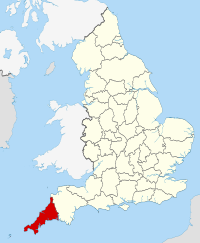Our Lady of Ushaw,
Saint Cuthbert's Chapel, Ushaw Seminary, Ushaw, County Durham, England.
Photo: April 2010.
Source: Own work.
Author: Zephyrinus.
Ushaw Seminary, County Durham, England.
Solemn High Mass 1960.
Available on YouTube at
"Ave Regina Caelorum".
Composer: Tomas Luis de Victoria.
Sung by: The Sixteen.
Director: Harry Christophers.
Available on YouTube at
Ave, Regina cælorum,
Ave, Domina Angelorum:
Salve, radix, salve, Porta,
Ex qua mundo lux est orta:
Gaude Virgo gloriosa,
Super omnes speciosa,
Vale, o valde decora,
Et pro nobis Christum exora.
Divine Holy Mass, Saint Cuthbert's Chapel, Ushaw, County Durham, England.
Photo: April 2010.
Source: Own work.
Author: Zephyrinus.
"Ave Regina Caelorum".
Composer: Orlande de Lassus.
Sung by:The Tallis Scholars.
Director: Peter Phillips.
Available on YouTube at
Solemn Requiem Mass, with a very young Richard Hawker as MC.
Our Lady of Ushaw statue can be seen behind the Deacon on the Sedilia.
Saint Cuthbert's Chapel, Ushaw, County Durham, England.
Photo: April 2010.
Source: Own work.
Author: Zephyrinus.
"Salve, Regina",
from The Eton Choir Book.
Composer: William Cornysh.
Sung by: The Tallis Scholars.
Director: Peter Phillips.
Available on YouTube at
Divine Holy Mass, Saint Cuthbert's Chapel, Ushaw, County Durham, England.
Photo: April 2010.
Source: Own work.
Author: Zephyrinus.

The following Text is from Wikipedia - the free encyclopaedia.
Ushaw College is a former Catholic Seminary, near the village of Ushaw Moor, County Durham, England. It was Founded in 1808 by scholars from The English College, Douai, France, who had fled France after The French Revolution.
Ushaw College was affiliated with The University of Durham from 1968 and was the principal Roman Catholic Seminary for the training of Catholic Priests in The North of England, finally closing in 2011 due to the shortage of Vocations.
The buildings and grounds are now maintained by a Charitable Trust.
Ushaw College is a former Catholic Seminary, near the village of Ushaw Moor, County Durham, England. It was Founded in 1808 by scholars from The English College, Douai, France, who had fled France after The French Revolution.
Ushaw College was affiliated with The University of Durham from 1968 and was the principal Roman Catholic Seminary for the training of Catholic Priests in The North of England, finally closing in 2011 due to the shortage of Vocations.
The buildings and grounds are now maintained by a Charitable Trust.
Solemn Requiem Mass, Saint Cuthbert's Chapel, Ushaw, County Durham, England.
Photo: April 2010.
Source: Own work.
Author: Zephyrinus.
Solemn Requiem Mass, Saint Cuthbert's Chapel, Ushaw, County Durham, England.
Photo: April 2010.
Source: Own work.
Author: Zephyrinus.
A Dawn Mass in The English Martyrs Side-Chapel. Ushaw, County Durham, England.
Photo: April 2010.
Source: Own work.
Author: Zephyrinus.
Saint Cuthbert's Chapel, Ushaw, Durham, England.
A perfect setting for the Celebration of The Divine Mass.
Photo: April 2010.
Source: Own work.
Author: Zephyrinus.
Saint Cuthbert's Chapel, Ushaw, Durham, England.
A perfect setting for the Celebration of The Divine Mass.
Please God, one day this Chapel will be a regular Mass location, again.
During the height of Ushaw Seminary in the 1960s, over 400 Seminarians would attend Daily Divine Mass in this Chapel.
Photo: April 2010.
Source: Own work.
Author: Zephyrinus.



































